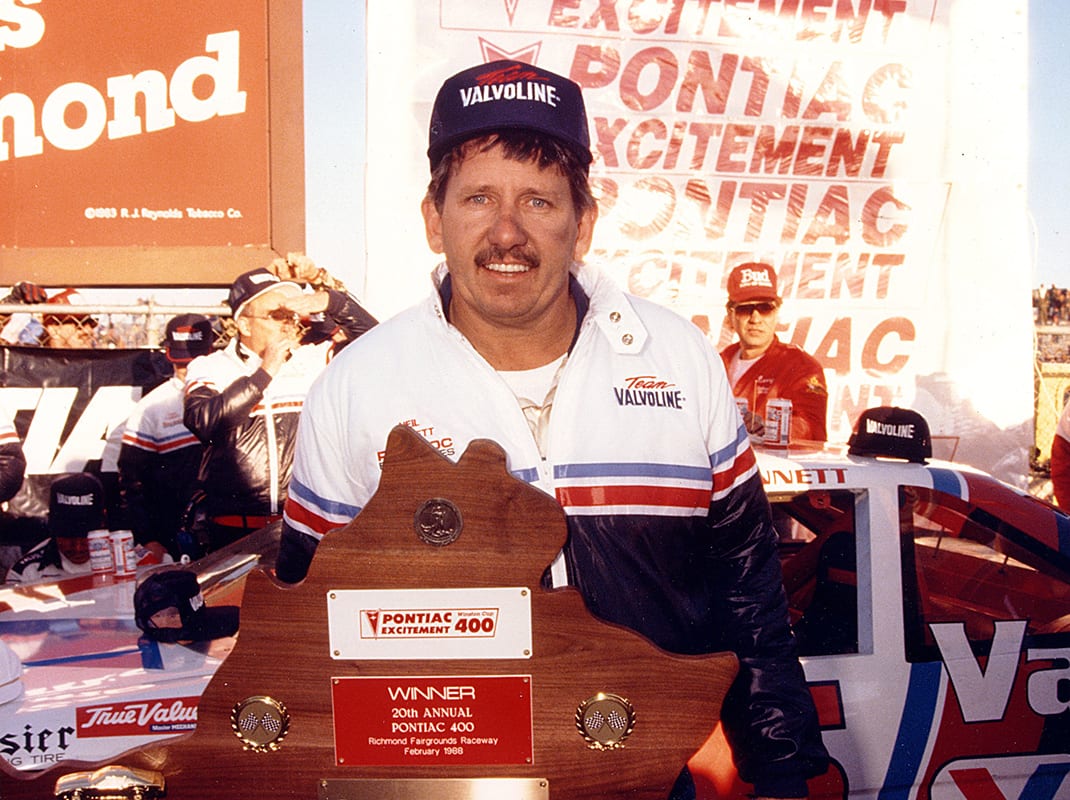This story originally appeared in the September 2016 issue of SPEED SPORT Magazine.
Career opportunities sometimes present themselves during the strangest of circumstances. During the second week of April 1979, NASCAR star and Alabama native Neil Bonnett found himself in a rather tight spot.
He sat quietly on pit road at Indianapolis Motor Speedway, anticipating the next line he would take around the famed 2.5-mile track. He had physically wedged himself into an open-wheel car owned by former NASCAR team owner and race sponsor Warner Hodgdon and was testing in hopes of qualifying for the Indianapolis 500 that May.
Looking through the narrow opening of his helmet, he saw a track official coming his way.
“Mr. Bonnett, you have a very important phone call,” the official said. Bonnett replied, “Well, I’m kind of busy right now. Who is it?”
The official said, “Some guy named Glen Wood.” Puzzled and questioning why Wood wanted to talk to him, Bonnett worked his way out of the car and ran to the telephone. It proved to be the biggest break of his racing career.
The founder of Wood Brothers Racing offered Bonnett the No. 21 Mercury, which was available because three-time NASCAR champion David Pearson had been released from the team. It was a couple of days after the Rebel 500 at Darlington (S.C.) Raceway, a race that is unfortunately remembered for when Pearson sat crippled at the end of pit road after taking off before two wheels had been secured. After eight seasons and 43 victories, Pearson and the Wood Brothers parted ways.

Bonnett abandoned his Indy car plans and began a four-year association with Wood Brothers Racing, earning nine of his 18 career victories with the team through 1982.
For years, Bonnett paid his dues. He was a wildly popular short-track racer from Alabama, having started his quest for success and stardom at such tracks as Montgomery and Birmingham. Unknowingly, his path to NASCAR began when he dropped by the shop of racing legend Bobby Allison during the early 1970s with an offer to help.
“During periods in my Cup career, I entered my own Chevrolets and built my own engines,” Allison said. “Late one night, Neil walked in and asked if he could do anything to help. He pitched right in and eventually began working his day job and then would come over to my shop in Hueytown and work at night. He was an incredibly dedicated hard worker and just loved being there.”
Allison was the consummate racer, entering short-track events around the country while running the full Cup Series schedule. Bonnett was always working, always getting Allison’s cars ready to go. Allison felt he should do something to compensate him for his time and effort.
“One day I asked Neil what I could do to pay him for all he had done for me and he said, ‘Let me drive for you.’ So I did,” Allison recalled. “He would go one direction with a car and I would go the other and he got to where he was winning as many races as I was.”
Bonnett broke into NASCAR’s premier series though a Cup Series ride with Charlie Roberts at Talladega (Ala.) Superspeedway in 1974. When Allison was badly injured in a crash at North Carolina Motor Speedway in Rockingham, N.C., in 1976, Bonnett filled in for qualifying at Richmond, Va., the next week and put Allison’s Team Penske Racing Mercury on the pole.
In 1977, he won his first race at Richmond for team owner Nord Krauskopf and followed it up with his first superspeedway victory at California’s Ontario Motor Speedway in the season finale. No wins came in 1978 after the team was sold to J.D. Stacy. There were only two additional starts for Stacy and one more for team owner Kenny Childers in 1979 before Bonnett found himself sitting in Hodgdon’s Indy car on that faithful April day.
Click below to keep reading.
